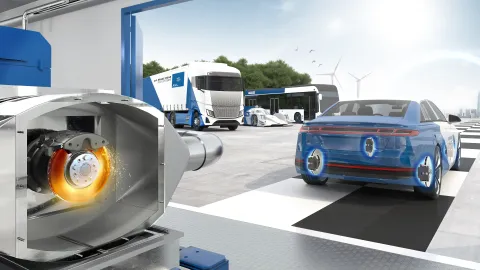
At AVL, all divisions collaborate closely to offer you comprehensive support. Our in-depth systems understanding enables us to guide you all the way from Testing-as-a-Service to brake attribute engineering. Our first step in brake emissions engineering is usually the evaluation of your brake emissions. We can also measure the vehicle-specific coefficients for considering recuperation (iFBSC).
In addition, we extensively review braking properties – including emissions, thermal behavior, NVH, performance, durability, and pedal feel. This is how we ensure that all components in the overall system harmonize optimally and comply with the current statutory requirements.
As the modern hard-metal-coatings on brake discs can cause noise in the system, we address this challenge when carrying out your NVH analyses on the test bench of our partnering companies. If required, we can also take care of the related ABS and ESC calibration. In cooperation with a technical service provider, we also offer the homologation of brake components and retrofit parts on the test bench as well as the entire brake system in the vehicle.
Component/Systems Engineering
Based on Euro 7 emission limits, we take care of brake- and propulson system development for you. There we focus on a holistic optimization of electric propulsion and brake system operation considering effects onto:
- Energy management
- Range
- Driving attributes
- Brake emissions
- Thermal aspects
Identification and Optimization
During baseline measurement we identify potential and optimize this to reduce, eliminate, or prevent emissions.
Perfect Interaction of All Attributes
We carefully consider all properties that influence each other.
Integration
We integrate new emission reduction technologies such as active/passive filter systems, multiple-disc brakes, or electromechanical brakes into the vehicle.

